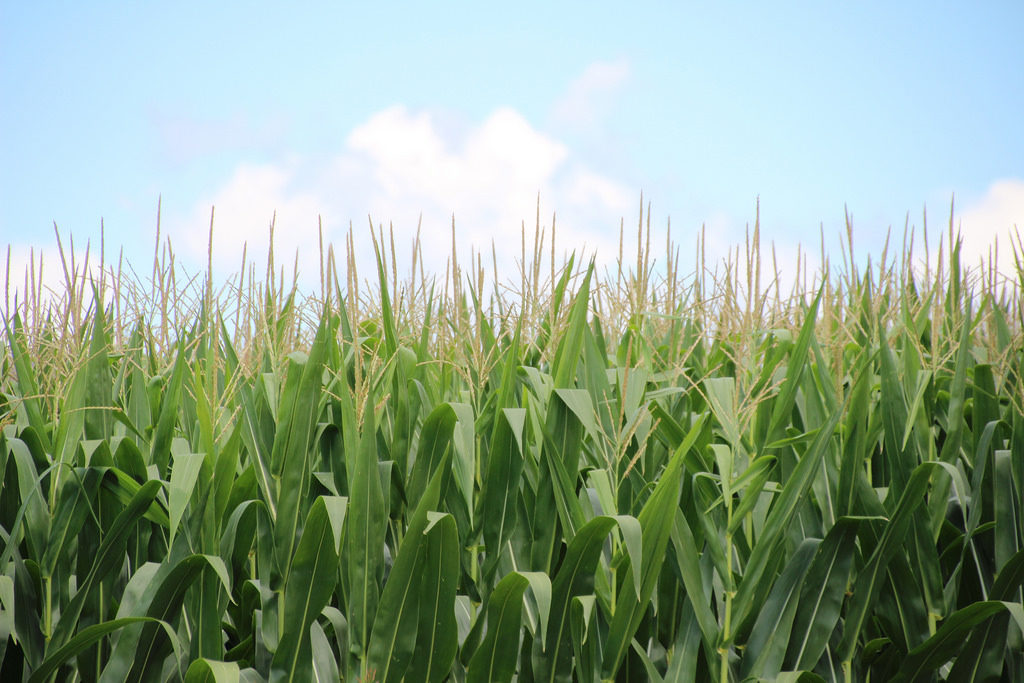From Our Ears To Yours: Observations from a Miller DSM Mike Terpstra; Sioux Falls, SD (part 2 of 2)
 Soybeans were a split story:
Soybeans were a split story:Northwest areas of my territory soybeans fared well in the cooler temps and consistent rains that usually aren’t present in June/July/August. The farther South East I went soybean yields stayed average or so, unless there was the faintest history of white mold. Especially heavily manured fields saw extremely yield inhibiting amounts of white mold, zeroing out some acres. Places that had an in furrow seed treatment like “heads up” saw significantly better yields.
July also saw a fair amount of green snap in a band just north of Sioux Falls. Some bigger name companies really took a hit. However I was impressed with 06-27, 01-41A, 98-70, 0961, 03-66BRG, and 03-53 for how they handled the stress, 03-53 probably saw the most snap at 10-20% but the ear flex made up for that loss. Also, it seemed like the farmers that did the usual N-P-K treatment and skimped on the micro-nutrients saw the most damage. I was fortunate enough to fly over the area in September and instead of seeing a visible wind type pattern throughout the country side there seemed to be wind damage on a per field basis. I would think hybrid selection or planting date would have played into things if I wasn’t around when those hybrids were getting planted.
The saving grace for soybeans this year was the average to slightly later than average frost date. Soybeans did a great job putting on yield late and that seemed to come from both seed size and quantity. Granted there were drowned out spots that cut into averages but it could have been a lot worse for the bean yields across a big portion of my territory. An Average year for beans was good compared to the corn.
Corn North of I-90 in South Dakota was rarely if ever over 55#tw, especially the farther north you went. I actually saw 45# corn, its been a long time since I have really even heard of test weights in the 40s (1993 and 2009). Moisture was very high in early October and then fell into the 17-22% range in several areas by the beginning of November. The corn did this without the heat which will probably mean there’s a fair amount of subpar corn in the bins out there. I also wish I would have been selling two things this year, tracks for combines and corn dryers. There were two types of farmers this year:
Farmer 1) Took the corn right away and either dried it himself or took the dockage
Farmer 2) Waited to see if the corn would dry down more in the field
Farmer 1 got finished on time and got some field work done. There were some unwanted cost involving moisture and test weight. However, 2020 might be smoother
Farmer 2 harvested dryer corn but may have some left in the field that should have been harvested had he not waited for propane. Field work has not been done or very little has been done.
This will make 2020 very interesting because of how 2019 played out. There’s several people gearing up for farm sales or planting more corn in 2020. Prevent plant acres got sold or worked and I would say 5-15% of the corn is still in the field based on where you look, nobody knows when that crop will make its way to town. The guys that worked their ground will likely plant the same maturity corn they’ve always planted and I still think there will be a fair number of farmers dropping their maturity next year whether its right or wrong. Soybeans will be interesting in the fact that weed pressure is mounting with the number of late sprayed prevent plant acres and yet the price keeps slipping. I can make a strong case for both the conventional and liberty trait based soybeans for 2020. Soybeans yield on genetics first and trait second, I would say in my area their is no one platform that out yields anything else. Just varieties that preform correctly where placed. Putting a plan together sooner than later with room for flexibility will be key going forward for 2020

